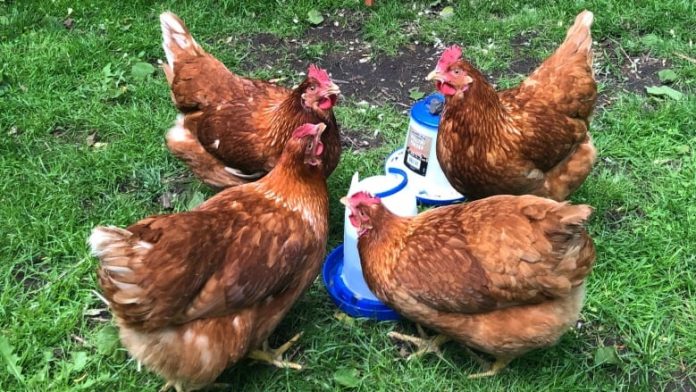I lived on a farm or a farm for 32 of my 39 years of life. For most of these years we have frequented large gardens and a fairly large flock of poultry.
A small flock of white feathered chickens graze among rows of ripe corn in a vegetable patch.
Even now, I have a herd of 50 or more people, and my garden plots seem to multiply with each growing season.
Every two or three years or so, I go to an article in a magazine that highlights the “chicken garden”. It will include idyllic photos of small red bantams picking beetles from a new squash vine.
We’ll talk about the simplicity with which you have to escape the intermediary and let the birds fertilize the garden directly.
The truth of why I’m at home has forced me to be realistic about the facts about the chickens and my harvest.
Even the pins on Pinterest make it look so beautiful.
Surely I have to do something wrong by keeping the chickens and the garden separate?
I love my little hens. They are wonderful and curious creatures, and their eggs make me so happy! My number one goal in gardening, however, is not to provide them with a place to live. It’s to feed my family.
The truth of why I’m at home has forced me to be realistic about the facts about the chickens and my harvest.
Although they can coexist, you will need to take certain deliberate (and often tedious) steps to keep the birds and producers happy! These include setting appropriate limits and implementing safer ways to integrate the world of poultry and flora.
CHICKENS ARE SELF-FISH
In many years in which I have tried to give birds small, closely watched roles in the garden ecosystem, I have learned a few things.
Hens in the garden can do stupid things; do you really want them there? | Gardener’s path
Most important of all is that these creatures want what they want and are very, very destructive to plants and their fruits. Some of their brand behaviors include:
1. Eat freshly sown seeds from the ground.
2. Reassemble the newly germinated seedlings.
3. Create a “dust bath” in the freshly plowed soil and smother any vegetation growing there.
4. Remove certain leaves from their plants and flowers.
5. Eat freshly cooked fruit.
It has been a very short time since it has been appropriate to allow them to live in a garden.
It is essentially once the plants have reached a size that they will not be easily destroyed by hungry hens, incubating hens or molting mothers. But they cannot be in the garden once the fruit is cooked.
This means that there are only a few weeks when they could coexist peacefully with your garden plants without much damage.
BIRDS IN THEIR TIME
So how does a shrewd gardener determine when to put hens in the garden?
Unless you want chickens to eat all of your tomatoes, you may not want to put birds in your garden | Gardener’s path
Most garden plants do not all produce at the same time. What may be the perfect opportunity to provide some pest control to the squash is inappropriate for the tiny, tender green tomatoes that would not be put in at the end of July.
As a result, chickens work best when they are assigned to a part of a properly zoned garden.
“Time Zone Gardening” (as I have dubbed it) groups plants that are producing around the same time. This makes it easy to block peppers and tomatoes from late winter squash.
Chickens can rotate through areas at appropriate times, causing little damage due to overgrazing or scratching.
EASY AND AFFORDABLE FENCE
You can give your garden the best possible chance of survival by dividing your areas with deer or rabbit fences.
Contrary to popular belief, it is not always a chicken in the garden. Equipment that is two feet tall, extended and secured with small posts, should keep the birds set.
Very few people will think of crawling under it, but you can still use small tent pins or a stake-like clip to secure the fence to the ground.
This brings us to keep the birds in their place. I’m not going to lie to you and tell you that hens do what they are supposed to do. Already.
I’m not going to lie to you and tell you that hens do what they are supposed to do. Already.
If you lay your birds to become natural (that is, they do not cut the wings or other modifications), they can – and will learn – to fly as high as their little wings will take them. This means that even the best constructed garden fences can eventually fail.
CLICK NEXT PAGE BELOW TO CONTINUE READING …










